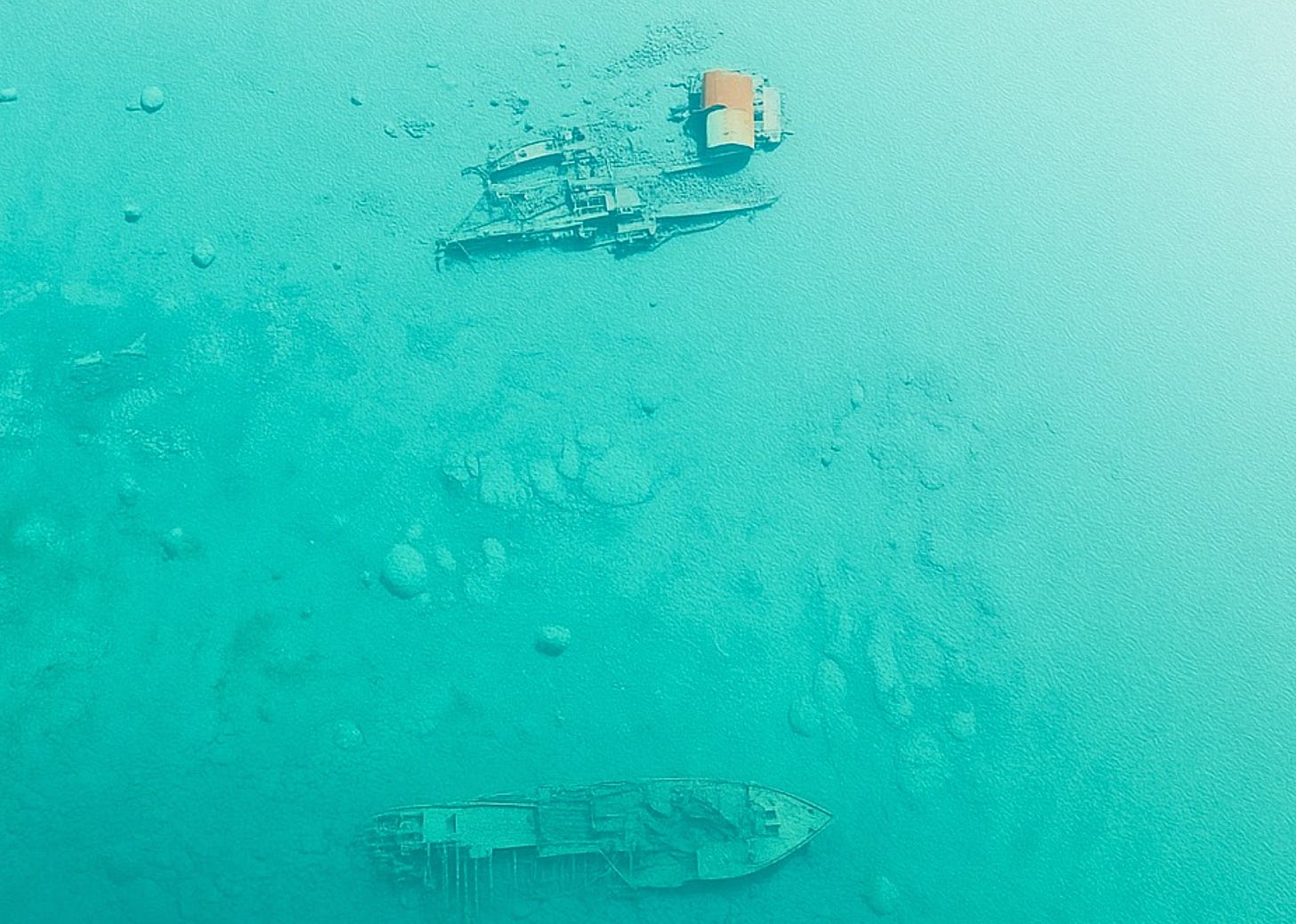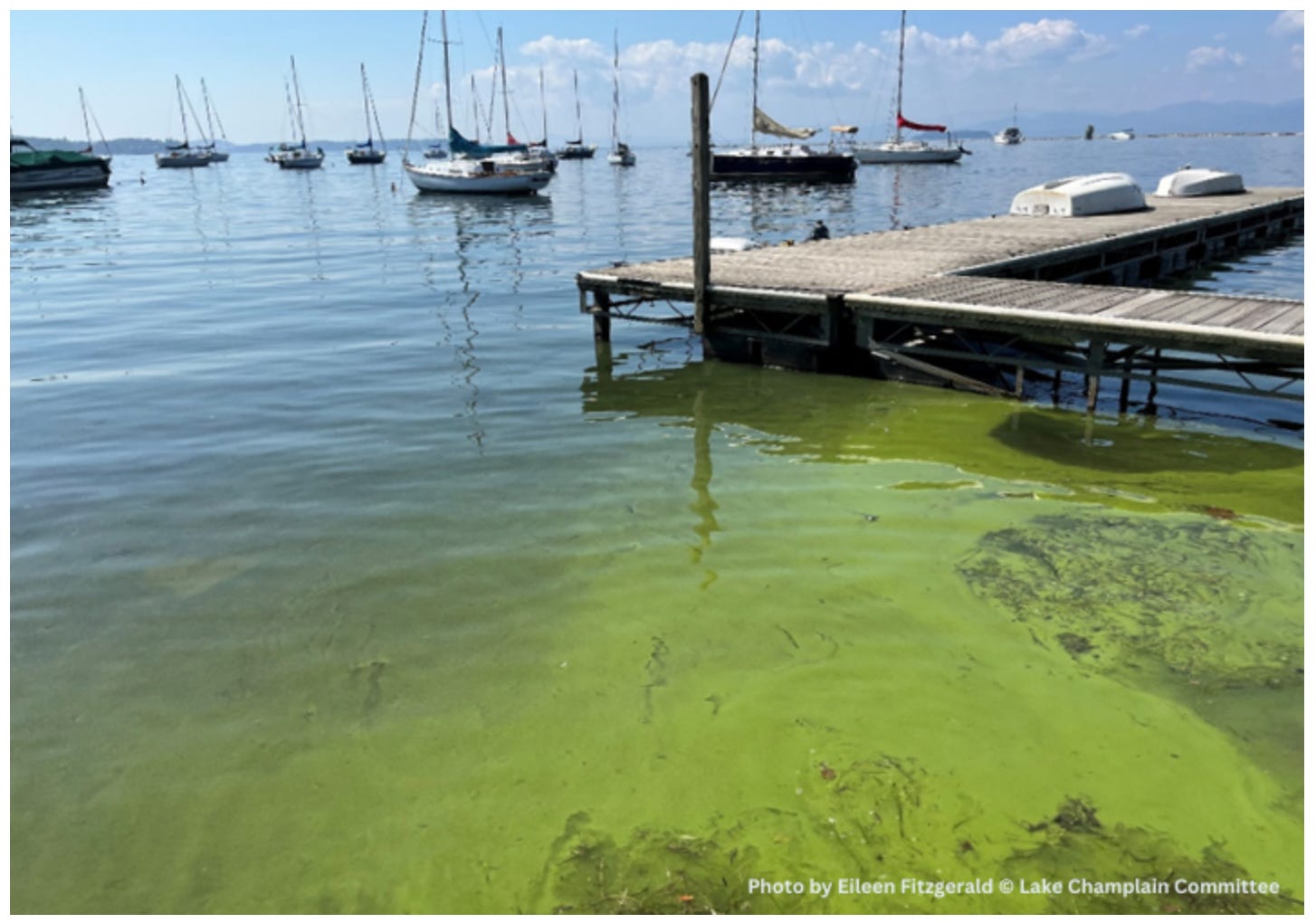Neil deGrasse Tyson Shares a Stunning Lake Michigan Photo – Why Isn't Lake Champlain As Clear?
Lake Michigan's super-clear" conditions seen today are largely due to an invasive species: the zebra and quagga mussels, which remove algae, but not without a different cost.
A recent social media post from astrophysicist Neil deGrasse Tyson, featuring an astonishingly clear view of a shipwreck at the bottom of Lake Michigan, has sparked curiosity and perhaps a touch of envy among Vermonters. The image, shared widely, shows the ghostly outline of a sunken vessel through seemingly crystal-clear water, a sight many might wish for in our own beloved Lake Champlain.
But why, when both lakes endure long, cold winters and significant ice cover, doesn't Lake Champlain offer up its own hidden shipwrecks with such dramatic clarity each spring?
The answer, according to limnological experts and environmental reports, lies in a fascinating and complex interplay of geography, chemistry, biology, and human impact that makes these two great lakes fundamentally different.
The Mystery of Michigan's "Super-Clarity"
The stunning transparency observed in Lake Michigan is a phenomenon that occurs for a brief window each spring. As the winter ice melts, but before the water fully warms up and spring winds kick in, the lake’s depths become remarkably visible.
Part of this is natural. The long, cold winter with its ice cover creates a period of stillness. According to a comparative analysis, this allows fine particles of sediment that churn up during other seasons to slowly settle to the lakebed. Think of it like a giant, natural filtration system.
However, the truly "super-clear" conditions seen today are largely due to an invasive species: the zebra and quagga mussels. These tiny mollusks, which arrived in the Great Lakes in the 1980s, are incredibly efficient filter feeders. Studies indicate their populations are in the quadrillions, and they can filter the entire volume of Lake Michigan in a matter of weeks. They relentlessly strip the water of microscopic algae (phytoplankton) and other suspended particles, dramatically increasing clarity.
"While beautiful to look at, this extreme clarity is actually a symptom of massive ecological disruption," explains one expert. The mussels' filtering has profoundly altered Lake Michigan's ecosystem. By removing algae from the open water, they effectively starve the base of the food web. They also shunt nutrients to the lake bottom, where they can fuel the growth of nuisance algae like Cladophora. When these die, their decomposition can create low-oxygen "dead zones" and even contribute to the growth of bacteria that produce botulism, leading to bird and fish die-offs. So, the visible shipwrecks are revealed by a clarity born not of pristine health, but of an ecosystem under immense stress from an invasive species.
Why Champlain Stays Murkier: A Tale of a Different Lake
Lake Champlain, despite its similar northern latitude, simply isn't set up for this kind of dramatic post-winter clearing. Here's why:
The Watershed's Overwhelming Influence: Perhaps the biggest difference is the size of the land area draining into each lake compared to the lake's surface itself. For every square mile of water in Lake Champlain, there are roughly eighteen square miles of land contributing runoff. This 18:1 ratio means Lake Champlain is profoundly impacted by everything that happens on its surrounding landscape, from farms to forests to developed areas. Lake Michigan, by contrast, has a much smaller land-to-lake ratio, about 2:1, meaning its vast volume buffers it more effectively from land-based inputs.
According to the Lake Champlain Basin Program, this large watershed delivers a continuous influx of sediment and, critically, a heavy load of nutrients, particularly phosphorus.
A Lake Primed for Production (Eutrophication): Lake Champlain is, by nature, a more "productive" lake. Environmental reports consistently classify it as a nutrient-enriched, or eutrophic, system. It receives an estimated 2 million pounds of phosphorus annually, with over 90% of this coming from diffuse sources across the landscape, such as agricultural runoff, eroding streambanks, and stormwater from developed areas. This phosphorus acts like fertilizer, ensuring that as soon as light and temperatures are right, algae will bloom vigorously.
Spring Turnover: A Lake's Big Stir: While Lake Michigan experiences a period of quiet settling after the ice melts, Lake Champlain undergoes a powerful "spring turnover." This is a natural process where the entire lake mixes from top to bottom. As the surface water warms to its densest point, it sinks, displacing deeper water. Aided by spring winds, this churns the lake, resuspending sediments that settled over winter and, crucially, bringing nutrient-rich water from the depths up to the sunlit surface. Far from creating clarity, this process actively reduces it and primes the lake for rapid algal growth.
Mussels Can't Keep Up: While zebra mussels have also invaded Lake Champlain (arriving in the 1990s), their impact on lake-wide clarity is significantly less profound than in Lake Michigan. According to monitoring data, they have increased clarity in some localized areas, but the sheer, constant load of new sediment and nutrients from Lake Champlain's massive watershed simply overwhelms their filtering capacity on a lake-wide basis. They are fighting a losing battle against a constant river of incoming pollution.
Different Challenges, Shared Responsibility
The clearer waters of Lake Michigan and the more productive, sometimes murky, waters of Lake Champlain tell different stories of human interaction with natural systems. Lake Michigan’s striking clarity is a visible sign of an ecosystem dramatically altered by an invasive species, leading to its own set of complex environmental problems.
Lake Champlain's condition, with its chronic phosphorus challenges and occasional widespread algal blooms, is a direct reflection of land use practices across its extensive basin. Decades of efforts, including Vermont's 1976 Phosphorus Control Act and the more recent 2015 Clean Water Act (Act 64) and stringent 2016 EPA-mandated phosphorus limits, aim to reduce this nutrient burden.
Ultimately, both lakes serve as powerful reminders that our large freshwater resources are deeply connected to the land around them. While we might admire a stunning photo of a clear shipwreck, understanding the full ecological context reveals that "clear" doesn't always mean "healthy," and the challenges faced by Lake Champlain require our continued, focused attention on what flows into its waters from our own backyards.




